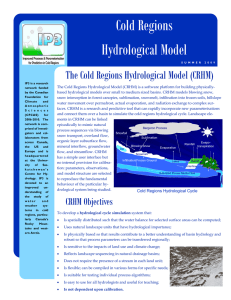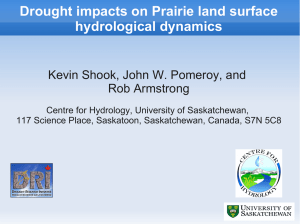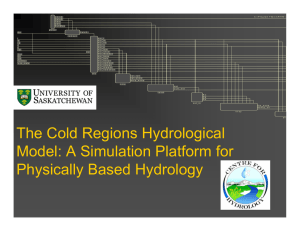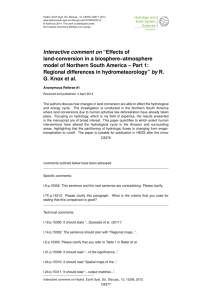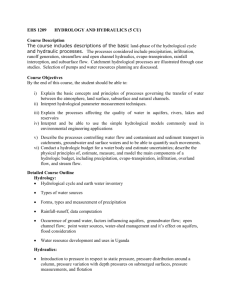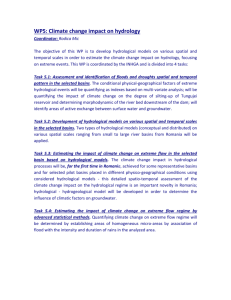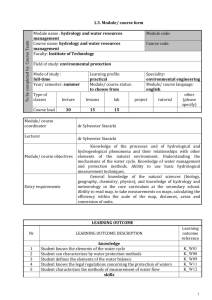Cold Regions Hydrological Model Platform, CRHM: Update 2009 Tom Brown and John Pomeroy
advertisement
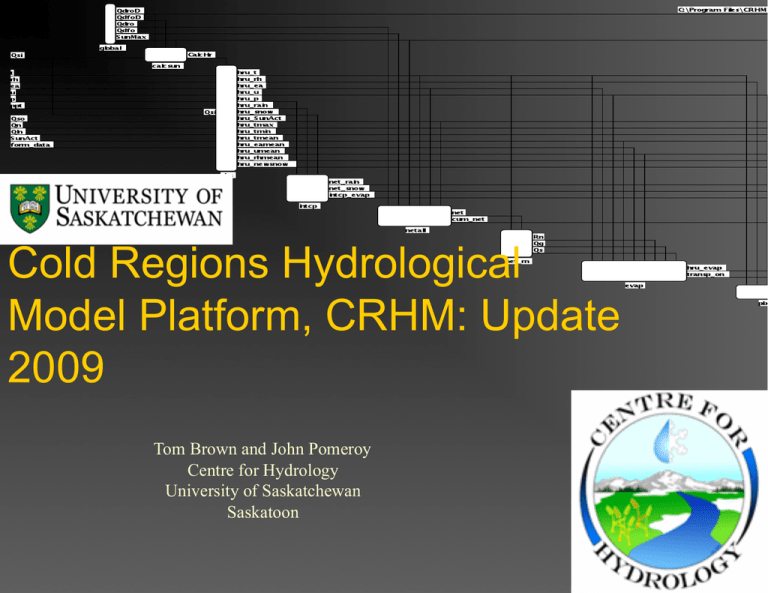
Cold Regions Hydrological Model Platform, CRHM: Update 2009 Tom Brown and John Pomeroy Centre for Hydrology University of Saskatchewan Saskatoon CRHM Objectives To develop a hydrological cycle simulation system that: is spatially distributed such that the water balance for selected surface areas can be computed; uses natural landscape/drainage units that have hydrological importance; is physically based so that the results contribute to a better understanding of basin hydrology and are robust and so that process parameters can be transferred regionally; is sensitive to the impacts of land use and climate change; Reflects landscape sequencing (e.g. catena) in natural drainage basins; does not require the presence of a stream in each land unit; is flexible: can be compiled in various forms for specific needs; is suitable for testing individual process algorithms. is easy to use for all hydrologists and useful for teaching IS NOT DEPENDENT UPON CALIBRATION! Cold Regions Hydrological Model Platform (CRHM) Started in late 1990s as NWRI land use hydrology model. Attempted to write Canadian modules for USGS MMS 1999 Tom Brown developed CRHM platform in windows environment Development of modules from MAGS, PAMF, NERC, Quinton-CFCAS, IP3 and other research Multiple developers: Brown, Gray, Granger, Hedstrom, Pomeroy What is New? Using “groups” to handle sub-basins and model over large basins with Muskingum routing Forest modules (radiation transfer) Evapotranspiration – soils interaction Depressional storage Gridded operation in batch files, Excel Using Groups to define many sub-basins CRHM Forest CRHM SWE Tests - CRHM Energetics Tests “Soil”: permits dryland or pond water balance and accounts for sub-HRU depressional storage Smith Creek, Saskatchewan Smith Creek: good data year Now to model operation…….
